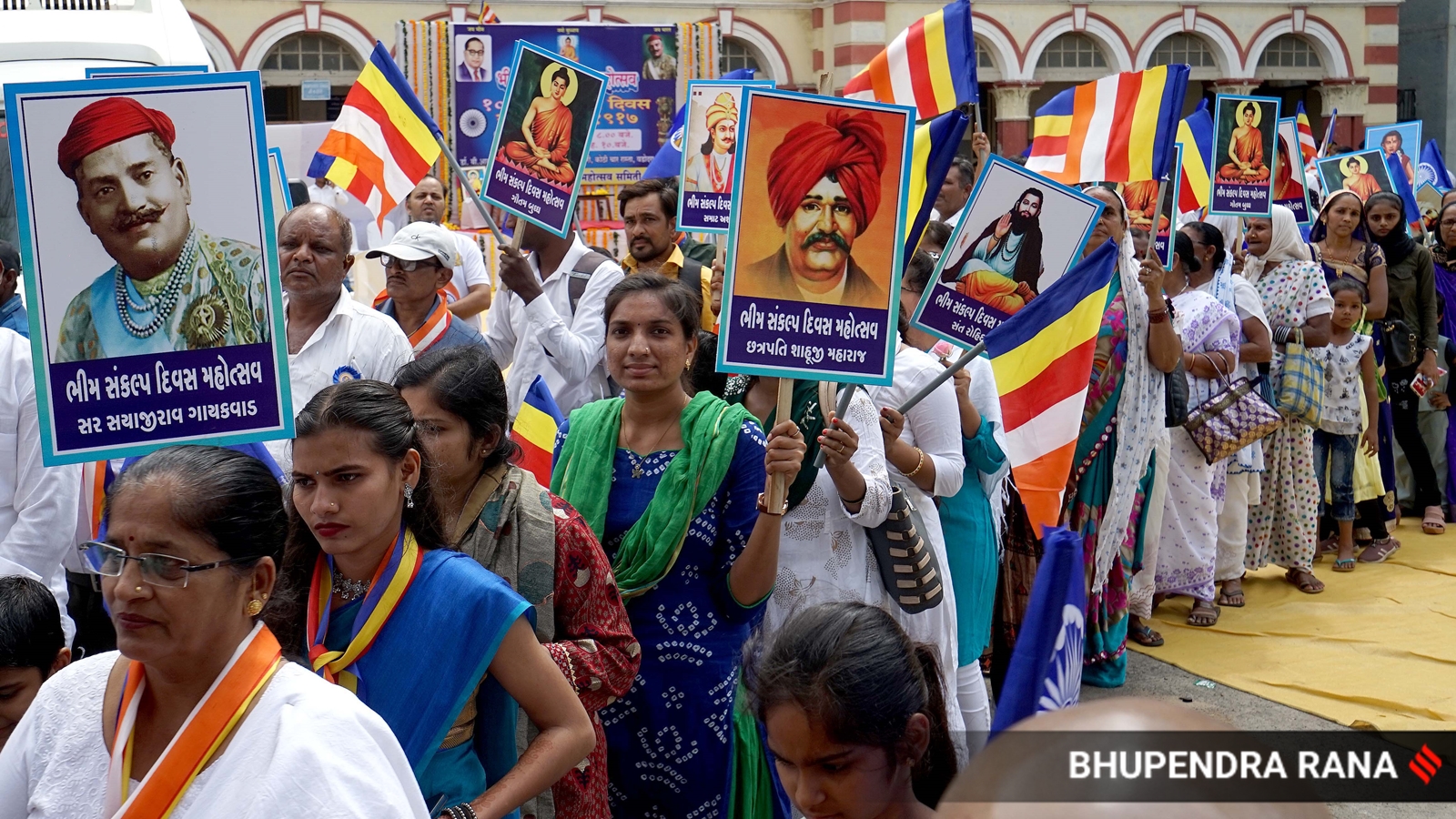The Supreme Court’s historic decision on sub-classification in reservation for Scheduled Castes and Scheduled Tribes has generated a heated debate within the Dalit community. Dominant sections within the Scheduled Castes have criticised the verdict. The reason is that the Supreme Court has opened the door for sub-classification in reservation. Those whose slogan was, “Jiski jitni sankhya bhaari utni uski hissedaari” are today protesting this sub-classification which seeks to address the demands of those who have been left behind so far.
Many who took advantage of reservation and have raised the concerns of the “85 per cent” do not want to include the ones left behind in their ranks. It is clear from their reaction to the Supreme Court’s decision that the slogan of “85 per cent” was just a slogan. This is somewhat like the Aam Aadmi Party, which does not have a single Dalit among the members it has sent to the Rajya Sabha, despite putting up Babasaheb Ambedkar’s photo in its offices.
Reservation is a guaranteed share, meaning that it will have to be given to a section by first identifying it. Classification is necessary to ensure participation. Classification is necessary to ensure participation. Justice B R Gavai aptly illustrated the need for sub-classification, saying that when someone enters a train compartment by pushing and shoving, he first attempts to ensure that no one else is able to enter.
Another example is that of Ambedkar himself who was like a mother serving food to all her children in the same utensil, thinking that they will share it. However, what usually happens is that the child who is strong and clever takes the larger portion quickly. He may even grab all of it by diverting the attention of other children.
Mahadalit Valmiki, Mazhabi Samaj, Musahars, Madigas, Chakkiliyans or Arunthathiyars are communities which could not avail the benefits of SC reservation. There are historical reasons why one community is in a position to avail this reservation and others are not.
Did the relatively stronger sections of Scheduled Castes try to take these backward sections along? In my view, this is asking too much of them.
It is rare that when some people in a society make progress, there is a collective effort to bring forward all those who lag behind. This usually has to be done by every community on its own and it can be done only using the language of rights.
The Court’s verdict has exposed those who claimed to bring together not only Dalits but 6,000 castes and were their self-proclaimed leaders. Mayawati never said that she was the leader of only Jatavs. Yet, that she is not more than that has been exposed time and again.
Absurd arguments are being made. Mayawati has described the situation as an emergency. Is it an emergency only when the question of sharing the benefits of reservation come up? Some well-meaning people have argued that the sub-classification will weaken Dalit unity. Does this mean that Dalit communities like Valmiki, Musahar, Madiga, etc. should never ask for their rights, fearing a fracture in the unity of the Dalits?
The same argument was being given when Ambedkar was demanding reservation. It was argued that reservation will create divisions and that the country will be weakened. But nearly 70 years of reservation have not led to division of the country.
On the other hand, there are many examples of those who grab all the benefits of reservation, keeping the most marginalised among the Dalits permanently in the background. Let us take the example of Mayawati. When tickets are distributed for the Uttar Pradesh Assembly elections, how many are given to members of the Valmiki community? When she was the chief minister of Uttar Pradesh, Mayawati named many places after great Dalit personalities but the name Valmiki was not to be found anywhere. She did not visit Gohana or Mirchpur in Haryana after Dalit communities there were attacked, while she did respond to similar incidents that took place elsewhere. If it is a question of “Dalit unity”, were the Dalits of Gohana and Mirchpur not deserving of her sympathy?
Are all the Bahujan communities included in the posters, banners etc. published by BSP, BAMCEF and similar organisations? Should these communities not demand their representation there? Does it need a formal demand and resolution?
We also believe that the creamy layer exclusion should not be applied in the case of the Scheduled Castes and Scheduled Tribes. But classification is necessary, just as Ambedkar had demanded a separate share system for Dalits while living with the whole country.
Mahadalits are not creating a rift among Dalit. That has never been the intention. The appeal is to all “Dalit upper castes” to think calmly and understand that the day the Mahadalits make economic, social, educational and political progress, the power of the entire Dalit society will increase.
The writer is chief, Adi Dharma Samaj.



